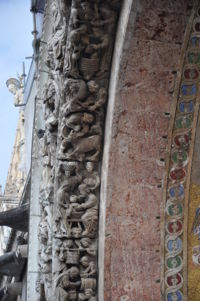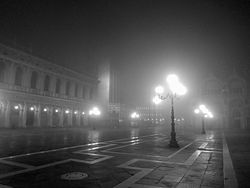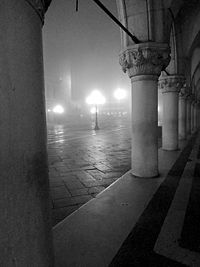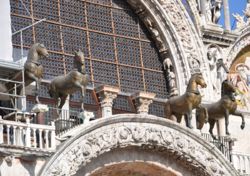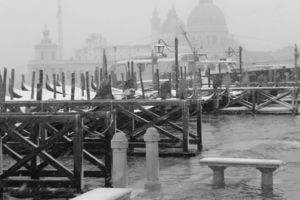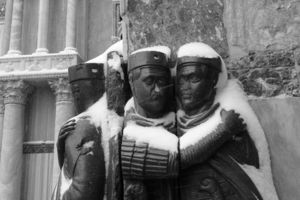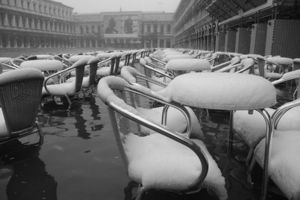St. Mark's Square
Da Venicewiki, il wiki di Venezia
Indice |
Description
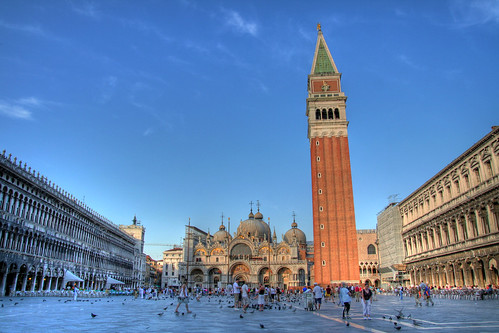
From the construction of Basilica of San Mark that backdrop, the square was enlarged, with the silting of the channel Botario which crossed about halfway through the space of the square. The orchard trees of the nuns of San Zaccaria was put back on that occasion, an integral part of the address space to the events of the nascent Republic of Venice.
From the center of the square you can admire the most important developments both for the Venetian political and religious events where the Basilica is the fulcrum. Continuing with a cinematic visuals (starting to the Basilica) on the right you can see the majestic Palazzo Ducale, the Piazzetta San Marco in which there are the two big monoliths supporting the statues of the two protectors of Venice, St. Mark, in his capacity as symbolic of the winged lion, and the precedent the Greek St. Theodore slaying the dragon, followed by the wonderful Molo, built from Sansovino before the Marciana Library , designed by renowned architect to host some of the manuscripts donated to the city in 1468 by Cardinal Bessarione greek Basil, still available, then the impressive size of the Bell tower, "El paron de casa", with the Loggia also built by Sansovino.
Thinking un'unicum for Piazzetta St. Mark, the New Procuratie and the Napoleonic Wing built to build a ballroom sacrificing Church of St. Geminiano too' it operates the Sansovino, the Old Procuratie, the Clock Tower, the Piazzetta dei Leoncini with the head of Patriarchal Curia.
Today, the Piazza San Marco is completely paved with boulders of trachyte, the so-called "masegni", but formerly was covered with bricks placed in part in a herringbone pattern and in part simply arranged against each other.
If you want to get away from Piazza St. Mark and head towards the railway is sufficient to take you under the Clock Tower and follow the paving stones of the pavement placed in a herringbone pattern. All you have to take the road that is paved in this way, so eye on the ground and you will find the Railway.
During excavations for the maintenance of the square, or more recently to the work of raising the bank of the St. Mark's Basin, showed that these floors have been extensively documented by the Superintendence for Architectural Heritage of Venice.
The floor has been raised several times, just think that the original floor level of the arcades under Doges' Palace is located at one meter from the current level and that the original Square was three steps below that level. With this background we must imagine what it must have seemed slim originally the Palace and that was to inspire awe at the majestic galleons that went into the St. Mark's Basin.
In 2001 started the work with which you should stop the tides averages, those between 80 and 120 cm on average sea that flood frequently Square St. Mark. The project involves removing the link between the discharges of storm water drains not to allow the tide to enter. The shore of the Piazzetta to the Molo was then raised to the level of project and the tanks were built to hold off the rain water in case of high water in the rain.
History
In ancient times the square is called "Bite", perhaps because his land was tougher and harder than the surrounding, and "Brolo" because it was grassy and surrounded by trees. We ran through a channel called "Batario", on which banks could be seen, one face to another, the Church of St. Theodore and Church of St. Geminiano, built as it is fame, by Narses, who had won the Goths with the help of Venetian ships.
After he was transported from Alexandria to Venice on the body of the Evangelist Mark, Partecipazio Justinian laid the foundation in 828 of the Basilica di San Marco, by gathering the oratory of San Theodore.
Next to the tower you can admire the three pili of bronze, cast by Alessandro Leopardi in 1505, which supports the rods carries the flag which waved the flags of the Republic.
Next to the Doges' Palace, the part of the "Molo," are the two columns of oriental granite, conducted at Venice from one of the islands.
The Doge Sebastiano Ziani, elected in 1172, expanded the "Square", burying the stream Batario, and demolishing the Church of St. Geminiano, which is further back where he repeated, several centuries later, by the power resources of the Sansovino, and remained until the time dell'Italico Government.
This done, he wanted the Ziani wear the "Square" itself of some buildings formed a gallery, which, as they were intended for habitation by prosecutors of St. Mark, is called "Magistrates".
These buildings, Italian Byzantine style, and in one plane only, are those which can be seen in the context of Gentile Bellini, painted in 1496, representing a procession in Square of S. Mark, and those that are represented by the plant Venice, carved in wood in 1500, and attributed to Albert Durer.
It happened that some of the houses, "the Magistrates', facing south, were damaged by fire, and that's why Antonio Grimani and Lorenzo Loredan, Procatori di San Marco, ordered in 1513 that all those houses were torn down, and in 1517 they commissioned the rebuilt in Guglielmo Bergamasco under the direction of Bartolomeo Bon, proto Procuratie.
Then the Procuratie we are talking about they said New, in comparison with the other located on the opposite side of the" Square "that kept the original their condition.
But they took the name of Old enabled once the others were completely remanufactured, began the work that Scamozzi in 1584, and finished in the next century, by different architects, all that followed, with some alterations, the style of Biblioteca Marciana, annex building, begun by Sansovino in 1536 after Zecca, which he erected in 1535.
Fall of the Republic, the "Old Magistrates' which, for the needs of war, were sold to individuals, continued to belong, and the 'New' including the 'library', were converted into Royal Palace, which in 1810 was lengthened by Cav. Just another wing of Vignola ('New Factory'), breaking down at this end, the Church of St. Geminiano.
In this square, the place had a lot of shows, like those of Maundy Thursday and Ascension (Ascension), and in 1782 we gave you a nice hunting of bulls in honor of the crown princes of Russia came under the name accounts of the North, visit Venice.
Foto
Flickr Error ( Photo not found ): PhotoID 3949534181
Flickr Error ( Photo not found ): PhotoID 3949555179

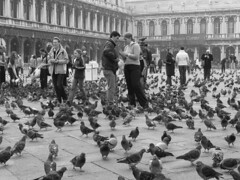


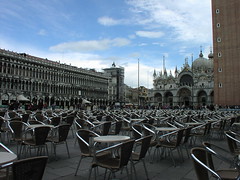
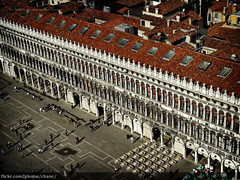
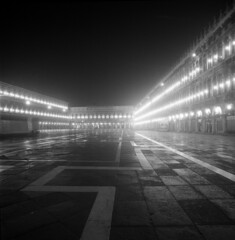
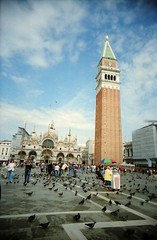
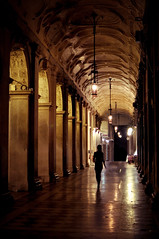
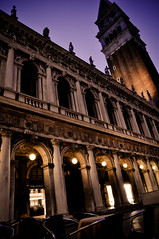
Video
- Apri YouTube
- Individua i video migliori
- Modifica la sezione relativa al video, inserendo il codice di ciascun video (l'ultima parte dell'indirizzo) tra <youtube> e </youtube>.
Esempio:
Per inserire il video che si trova all'indirizzo: http://it.youtube.com/watch?v=vTw8RNnM14k
Basta scrivere: <youtube>vTw8RNnM14k</youtube>
<headertabs />
Questa voce è un abbozzo. Richiede di essere adeguatamente ampliata e migliorata. Modificala ora
Categorie: Video | Da migliorare
